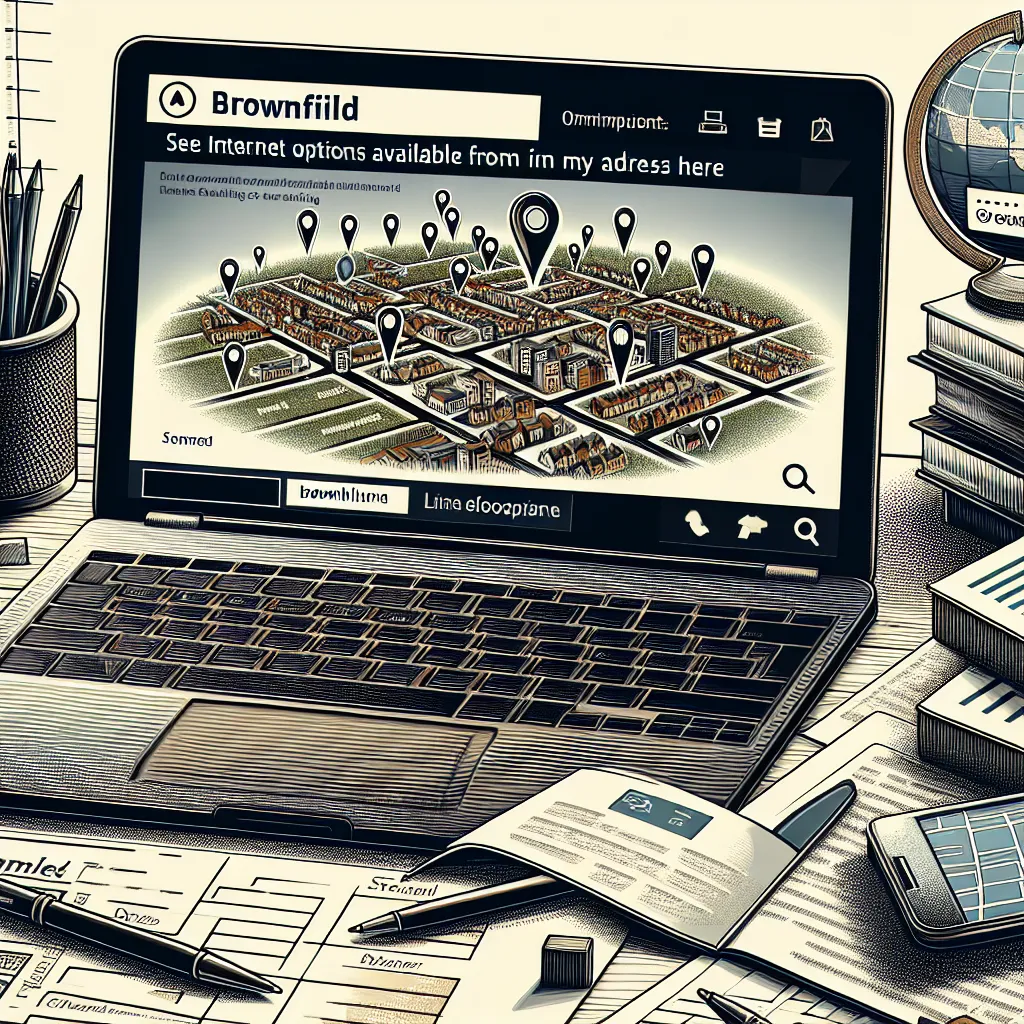Brownfield: See Internet Options Available at My Address Here
Brownfield: See Internet Options Available at My Address Here
Living in a brownfield area can sometimes pose challenges when it comes to accessing reliable and high-speed internet services. However, with advancements in technology and the increasing demand for connectivity, various options are becoming available to residents in brownfield locations. In this article, we will explore the internet options that you can consider for your address in a brownfield area.
Understanding Brownfield Areas
Before delving into the internet options, let’s first understand what brownfield areas are. Brownfield is a term used to describe previously developed or industrialized land that is now vacant or underutilized. These areas often have environmental contamination or infrastructure challenges, making them less desirable for further development. Brownfield areas can be found in both urban and rural locations, and they can pose unique challenges for residents, including limited access to essential services like high-speed internet.
Internet Options for Brownfield Areas
While brownfield areas may face connectivity challenges, several options are available to residents to ensure they have access to reliable and fast internet services. Here are some of the options you can explore:
1. DSL (Digital Subscriber Line)
DSL is a popular internet connection type that utilizes existing telephone lines to provide internet access. It offers a reliable and stable connection, making it a viable option for brownfield areas. DSL speeds may vary depending on the distance from the service provider’s central office or local exchange, but it can still provide decent internet speeds for regular browsing, streaming, and online activities.
2. Cable Internet
If your brownfield area is serviced by a cable provider, you can consider cable internet as an option. Cable internet uses coaxial cables to deliver internet services, offering higher speeds compared to DSL. It is a widely available option in many areas, including brownfield locations, and can support multiple devices simultaneously.
3. Fixed Wireless
Fixed wireless internet is an excellent option for areas where traditional wired connections may not be feasible. It uses radio signals to deliver internet access directly to a receiver dish installed at your property. Fixed wireless can provide high-speed internet, making it a suitable choice for brownfield areas with limited infrastructure or where other options are not available.
4. Satellite Internet
Satellite internet is an option worth considering if your brownfield area lacks terrestrial-based internet services. It uses satellites to transmit and receive data, providing internet coverage to remote or underserved locations. While satellite internet can offer broadband speeds, it may have limitations in terms of latency and data caps, so it is essential to consider your specific needs before opting for this service.
5. Mobile Hotspots
If you have a good cellular signal in your brownfield area, using a mobile hotspot can be a convenient option. Mobile hotspots utilize cellular data networks to create a Wi-Fi connection that can be shared with multiple devices. However, it’s worth noting that your internet speeds may depend on the strength of the cellular signal in your area and the data plan you have.
6. Fiber Optic Internet
While fiber optic internet may not be widely available in all brownfield areas, it is worth checking if your location is within the coverage area. Fiber optic internet offers blazing-fast speeds and reliable connections, making it ideal for bandwidth-intensive activities such as online gaming, streaming 4K content, or running a home office. It utilizes thin strands of glass or plastic to transmit data using light signals.
Researching and Comparing Providers
When looking for internet options in your brownfield area, it’s essential to research and compare the available providers. Here are a few factors to consider:
1. Coverage and Availability
Check if the provider offers services in your specific brownfield area. Some providers may have limited coverage, so it’s crucial to ensure they serve your address.
2. Speed and Bandwidth
Consider your internet usage requirements and choose a provider that can offer the speeds and bandwidth you need. Different activities, such as streaming, gaming, or working from home, may require varying levels of internet speed.
3. Pricing and Contracts
Compare the pricing and contract terms of different providers. Look for any hidden fees, installation costs, or long-term contracts that may impact your decision.
4. Customer Reviews and Support
Read customer reviews and ratings to gauge the quality of service and customer support provided by different internet service providers.

Conclusion
Living in a brownfield area doesn’t mean you have to settle for subpar internet connectivity. With various internet options available, you can find a solution that suits your needs and provides reliable and high-speed internet access. Whether it’s DSL, cable, fixed wireless, satellite, mobile hotspots, or fiber optic internet, exploring the available options and researching different providers will help you make an informed decision. Stay connected and make the most out of the digital world, even in brownfield areas!
